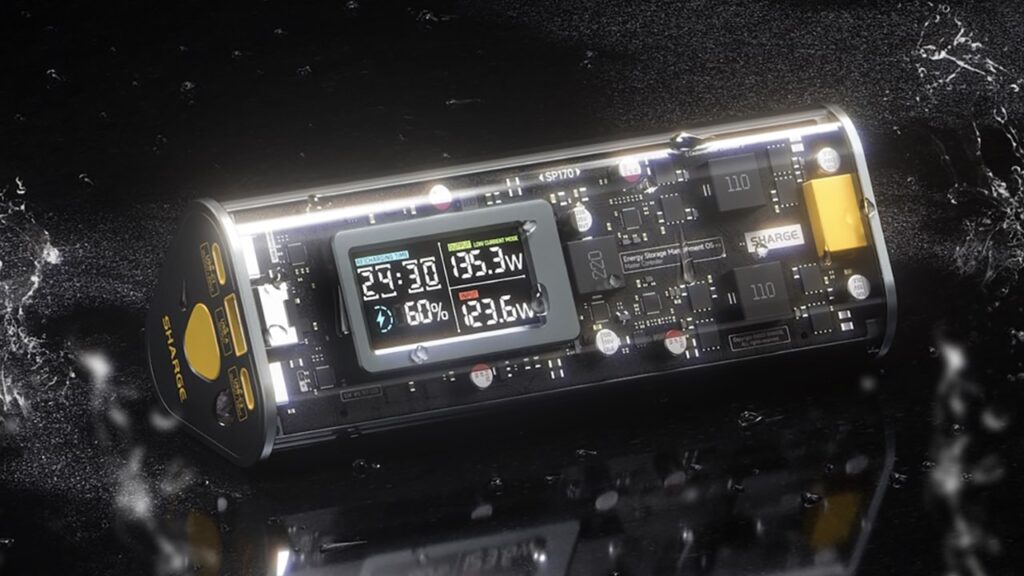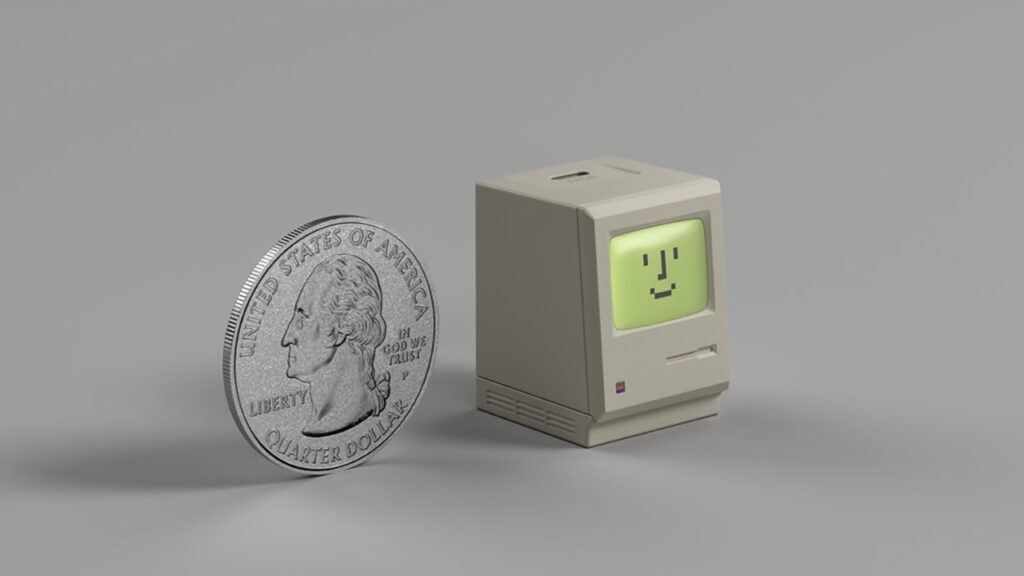In 2019, Zhang Bo co-founded Sharge with a group of former colleagues from Meizu, DJI, and Gree after recognizing the potential of gallium nitride (GaN) in fast chargers. Sharge’s first product launch on Kickstarter exceeded expectations, raising over USD 1 million. Within two years, its premium power banks climbed to the top of Amazon’s US site in the high-end category. By 2024, the company’s revenue surpassed RMB 200 million (USD 28 million), with 60% of sales coming from overseas markets.
The beginning of 2025 was a whirlwind for Sharge. The company’s artificial intelligence glasses debuted with momentum, selling out quickly and generating buzz across the industry. Yet, just two weeks after launch, a wave of large-scale returns followed, dampening the initial excitement.
For many, this was the first time they had heard of Sharge. Established six years earlier, the company had operated under the radar, quietly thriving as a Shenzhen-based hardware firm. Profitable, but lacking the media spotlight—until its AI glasses pushed it into the limelight at the end of 2024.
When Zhang left Meizu to start Sharge in 2019, the odds were stacked against any new entrant in China’s hardware sector. To survive, startups had to identify and serve niche segments that tech giants had overlooked. After scrutinizing the market, Zhang and his team found that while the power bank segment seemed crowded, unmet needs still existed among specific user groups.
Outdoor enthusiasts, for instance, needed rugged, waterproof, high-capacity power banks that could support drones and cameras. Meanwhile, frequent business travelers sought ultra-thin, fast-charging power banks capable of supporting multiple devices simultaneously. This demand led Sharge to explore GaN, a material that had recently transitioned from military to civilian applications.
At the time, GaN was gaining traction in the consumer electronics space. It had previously been used in fighter jets, phased arrays, and radar systems because of its high power density and low energy consumption. The technology’s potential for fast chargers was apparent, and companies like Anker, Baseus, and Ugreen had already begun introducing GaN-based power banks. Zhang and his team recognized the window of opportunity.
Taking the high-end route
For Sharge, success has hinged on a precise understanding of its target audience and a commitment to meeting their evolving needs. Unlike mainstream power bank brands that compete on price and focus on cost-effectiveness, Sharge deliberately took the high-end route. Its core customers—tech enthusiasts and engineers—are drawn to cutting-edge products that push the limits of performance and design. These users crave innovation and are willing to pay a premium for superior quality.
This philosophy is reflected in Sharge’s investment strategy. The company often spends two to three times more on raw materials and design processes than its competitors, ensuring that its products stand out in both functionality and aesthetics.
Sharge’s distinctive design draws inspiration from Apple’s iconic iMac G3, which featured a transparent casing that invited users to peer inside. Similarly, Sharge’s power banks showcase their inner workings—printed circuit boards (PCBs), chips, batteries, and more—giving the devices a futuristic, high-tech aesthetic. This design not only appeals to the visually curious but also allows users to intuitively grasp the product’s structure and functionality.

Some Sharge models go a step further by incorporating a multifunctional display that provides real-time insights. Users can monitor key metrics such as remaining battery life, input and output voltage, current, power, and battery temperature. While this feature adds to the product’s weight, power consumption, and manufacturing cost, it enhances the user experience by offering an interactive and informative interface.

Sharge’s attention to detail comes at a cost—literally. Its products are priced significantly higher than those of competitors. For instance, the Flow Mini, a 5,000-milliampere-hour power bank, utilized automotive-grade 21700 cells housed in an ultra-compact casing. By redesigning the charging circuit, Sharge enabled the device to hang directly under a phone while charging. Despite its modest size, the Flow Mini was priced around RMB 150 (USD 21), compared to similar products that retail for RMB 50–60 (USD 7–8).
“Based on our research and user feedback, we’ve found that performance- and design-conscious users are willing to pay a higher price for a better-looking, more powerful product,” Zhang told 36Kr. “In the past, no one made a RMB 1,000 (USD 140) power bank that blended hard tech aesthetics with strong performance. But there has always been latent demand for such products. I believe this segment still holds growth potential.”
While Sharge initially targeted tech enthusiasts, its customer base has grown to include photographers and drone operators who demand reliable power solutions for their equipment. These users often grapple with battery limitations during prolonged outdoor shoots or travel. Whether it’s a professional shoot or an adventurous hike, they need power banks that can sustain multiple devices for extended periods.
“These users have more diverse requirements when choosing charging solutions, and they are among our most loyal repeat customers,” Zhang said. “For instance, long-distance travel photographers often carry two to three large power banks to ensure that multiple devices remain charged.”
In the highly competitive power bank market, where technical barriers have largely eroded, differentiation lies in understanding niche preferences and tailoring products accordingly. Sharge has fine-tuned its offerings to cater to diverse consumer demands across domestic and international markets.
In China, where consumers prioritize convenience and versatile usage at a reasonable price, Sharge has developed smaller, more compact power banks. These models outperform standard shared power banks in both capacity and efficiency, typically priced between RMB 100–200 (USD 14–28).
In contrast, overseas markets—particularly in the US and Europe—place greater emphasis on performance and user experience. For these regions, Sharge has prioritized GaN-based power banks that deliver faster charging speeds and higher capacities, meeting the expectations of demanding users.
Sharge’s premium products have found their strongest foothold overseas. According to 36Kr, the company’s most powerful models perform best in international markets, where the average order value ranges from USD 100–200. Sharge’s independent website previously attracted 700,000–800,000 monthly visits, peaking at 1 million, with monthly sales consistently reaching USD 400,000–500,000.
A product-first, marketing-led approach
Today’s power bank market is plagued by homogeneity. Many brands offer products with similar designs, battery capacities, and charging speeds, leaving consumers with little to distinguish one from another. With no major breakthroughs in underlying charging technology, manufacturers face a landscape defined by intense competition and rapid product iteration—an environment where differentiation is difficult and fleeting.
In this crowded space, brands now compete by fine-tuning product features and optimizing designs to meet the core needs of their target audience. Success requires more than just technical expertise—it demands a deep understanding of users and a sharp marketing strategy to communicate those innovations effectively.
Sharge’s primary user base consists of tech-savvy enthusiasts who know their specifications inside and out. These consumers pay close attention to incremental improvements, whether it’s a boost in energy density or the addition of real-time monitoring for charging and discharging processes. Their purchasing decisions are driven not just by functionality but also by aesthetics, novelty, and exclusivity. Some view high-end power banks as fashion accessories or collectibles, often amassing multiple units with unique designs or limited editions.
“Power banks have a relatively long lifespan—typically lasting three years or more,” Zhang told 36Kr. “Although Sharge has launched numerous SKUs with varying performance levels, we are not in a rush to expand our user base. Our core users remain the primary consideration in our product iterations. If regular consumers appreciate the product’s innovations, that’s a bonus, but if they don’t, we won’t force it.”
Sharge’s marketing strategy is equally focused and deliberate. Rather than chasing the mass market, the company zeroes in on its core audience and leverages this loyal base to generate secondary exposure. This approach was evident from the outset—Sharge chose to launch its first product on Kickstarter, a crowdfunding platform popular among tech enthusiasts in Europe and the US. These users are highly receptive to innovation and willing to support ambitious entrepreneurial ventures.
According to Zhang, platforms like Amazon, which primarily focus on sales, can only do so much in building a loyal customer base. In contrast, Kickstarter introduces 30–50% of the initial organic traffic for a project. By channeling that traffic to its independent website, Sharge has cultivated a group of loyal customers, with an annual repurchase rate of 40%. Many of these customers return the following year to explore other product categories.
“We are not targeting the mass market,” Zhang said. “Our strategy is built around identifying and engaging people based on their interests and attributes, then continuously influencing them through platform recommendations and advertising algorithms.”
To strengthen its foothold in overseas markets, Sharge has made significant investments in localization. In Europe, for instance, the company has set up an independent German-language website and established a presence on platforms like Instagram and X (formerly Twitter), with content produced in German. In Northern Europe, Sharge has built a robust distributor network and collaborates closely with local sales teams.
Currently, Sharge’s products are sold in dozens of countries worldwide through both online and offline channels. In China, the company partners with outlets like Sundan, while overseas, it has established retail relationships with chains such as MediaMarkt and Best Buy.
Despite these retail partnerships, past results suggest that entering large retail channels offers limited value for power bank brands. Established retailers already have strong brand affiliations, and for startups, the cost of entry can be prohibitively high. As Zhang put it, companies often end up paying hefty entry and protection fees without seeing meaningful conversion.
To navigate this challenge, Sharge is exploring a different approach: recruiting local employees in Europe to open small pop-up stores.
“Opening pop-up stores in prime locations within major shopping malls—such as high-traffic consumer corridors—can be more cost-effective than entering large retail channels while delivering a superior offline experience,” Zhang said.
Sharge’s founding team ventured into a space that large companies had temporarily overlooked. Its goal was not to pioneer an entirely new field but to perfect an existing niche. From this perspective, Sharge’s products may not be groundbreaking or radically daring. Yet, through relentless focus and attention to detail, the company managed to rise above Shenzhen’s hardware sector—often referred to as a “graveyard” for aspiring companies.
Sharge’s future, however, is not without its challenges. As battery material costs continue to decline, the cost of power bank production is expected to drop, intensifying price competition in the short term. To counter this, Sharge intends to maintain its high-end positioning while expanding its product portfolio.
One area of focus is power solutions for photography equipment and drones, where reliable, high-performance charging is critical. Another growth avenue is the burgeoning sector of AI-powered hardware, where battery life is becoming a pressing concern.
“As demand for computing power grows, power supply will likely become a bottleneck,” Zhang said. Sharge is already developing specialized chargers for AI-driven products, including wearable power banks that free up users’ hands and dedicated charging equipment for AI devices.
KrASIA Connection features translated and adapted content that was originally published by 36Kr. This article was written by Huang Nan for 36Kr.
